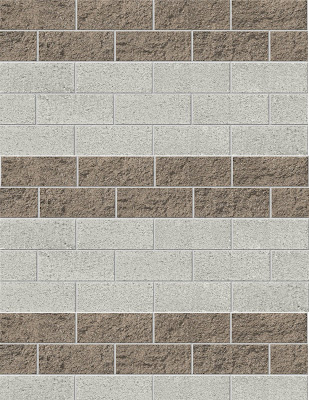
There are a number of factors to consider when selecting block -
2. Face texture - standard is a precision finish, but split face, combed and textured are available.
3. Block color - grey is standard, but about 12 different tones are available.
4. Aggregate color - can be black and white or multi-color.
5. Block bond pattern - standard is running bond, stacked bond is possible and 1/2 and 1/3 block stagger is possible.
6. Mortar color - light grey is standard, but about twenty colors are available.
7. Mortar joint type - concave is standard, but raked, weathered and reveals are also possible.
____
If you use the cheapest block in the most mundane pattern,
this is what it looks like...









it is also possible to alternate texture and color on one wall -

these are generated from a downloadable program from Basalite Concrete Products
http://www.basalite.com/california/structural_concrete_block/masonry_designer.html
. . .
Thanks!
ReplyDeleteAs I write this, I'm downloading the designer. I've been playing with this for awhile and lost my file of designs so I'm starting over. I'm particularly interested in dry-stacking standard blocks. Do you know of a image file with different combinations?
ReplyDeleteI am fascinated by the hundreds of patterns of decorative breeze-blocks used in temperate and tropical zones. You migh consider doing a feature on them. There is a man with a website who collects pictures of breeze blocks with location and possible date of build-- I was amazed at how beautiful some of them are, and the many ways they can be used.
ReplyDeleteI read that Post and got it fine and informative. Please share more like that... tuckpointing company in st. louis
ReplyDelete